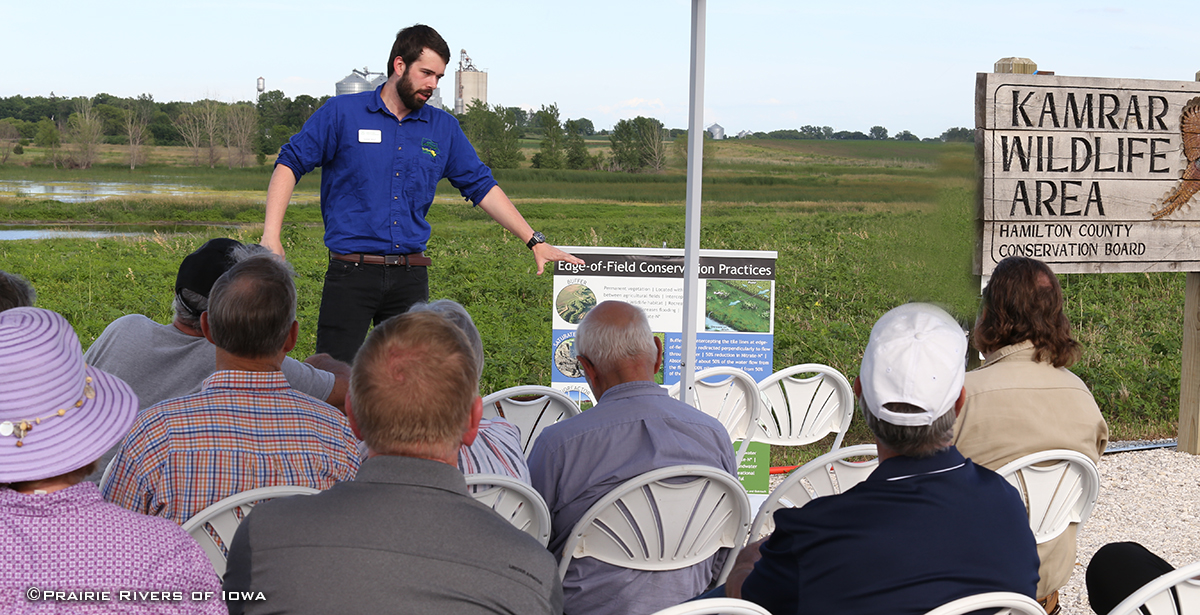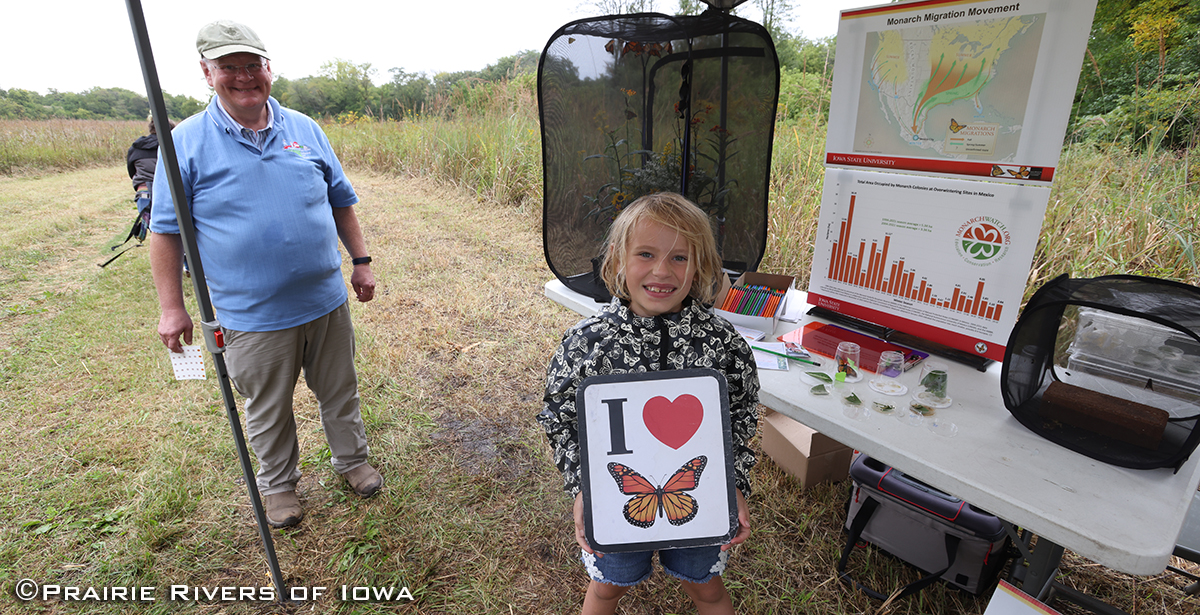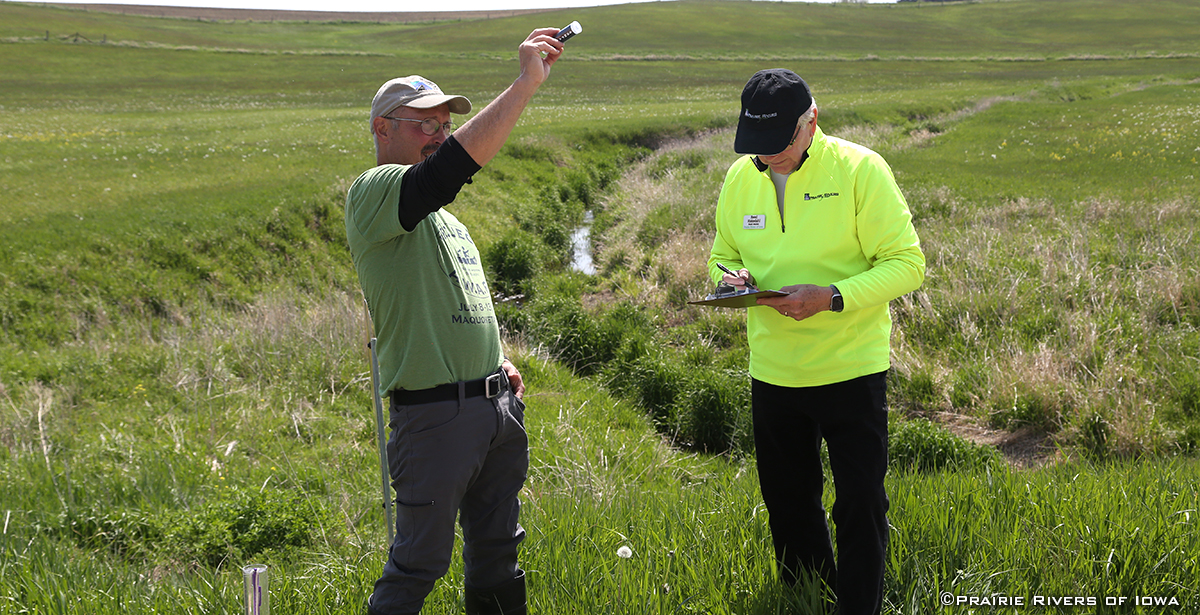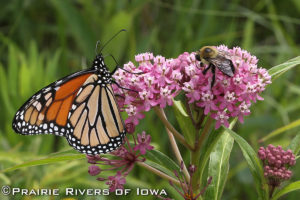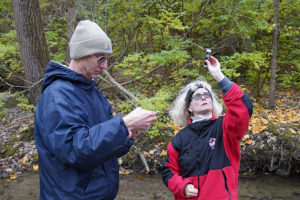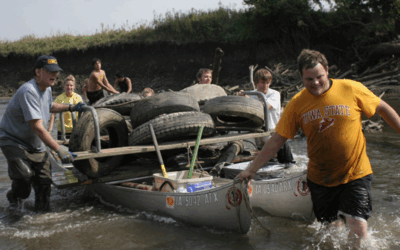Watersheds and Wildlife
The Watersheds and Wildlife Program works to improve water quality in rivers and lakes and to restore habitat for the 100 species of butterflies and 400 species of bees found in Iowa. We accomplish this work through robust education and monitoring, and by partnering with both private landowners and local government.
Past projects have focused the Ioway Creek and Skunk River watersheds in Story, Boone, and Hamilton counties.
Here is what we’re up to now:
Ames Pollinator-Friendly Community Plan
Prairie Rivers and the City of Ames have a vision to become a leader in developing and sustaining pollinator habitat that will enrich the quality of life for the human and biological communities of Ames.
Enrolling working lands into butterfly habitat
This upcoming project will help farmers and landowners create habitat for monarch butterflies and other pollinators, and enhance the value of existing conservation lands for monarchs. The project has a special focus on women landowners.
Creek Cleanups
Over the past few years, we helped plan five volunteer events that removed over 9000 pounds of trash from Ioway Creek and other streams in central Iowa. Depending on the weather, we may be walking, wading, or paddling canoes, but it’s always a good time! Keep an eye on our Events page–we do at least one a year.
Water monitoring in Story County
Water quality in most creeks and lakes in Story County is not tested by state agencies, so in 2020 we worked with 9 partner organizations to plan for how we could sustain a monitoring program at the local level. Prairie Rivers continues to support the effort by collecting samples, organizing volunteer events, and making sense of the data.
Movement Infrastructure for Clean Water in Iowa
We were able to build relationships with some of the wide range of groups that do water monitoring across Iowa, as well as dive deep into analysis of a statewide dataset, thanks to grant from the Water Foundation which wrapped up in November of 2024.
Relationships between water quality and livestock density
We spotted some interesting patterns in a statewide database that reveal some ways in which manure can impact Iowa’s rivers, and some ways it doesn’t. Our finidngs were presented to the Raccoon River Watershed Association (which helped fund the project) and the 2024 Iowa Water Conference.
Conservation Connection Blog
A big part of our work is telling engaging stories to help explain the science and policy behind the environmental issues we work on. Here are three of our latest posts from the Conservation Connect Blog.
(Don’t) Blame it on the Rain
In an interview with KCCI, Iowa Governor Kim Reynolds blamed the weather for high nitrate levels in the Raccoon and Des Moines rivers that have led to an unprecedented outdoor watering ban for the Des Moines metro. Weather does have an influence on nitrate levels in rivers, but if we look at all the evidence, it’s clear that this spring is not a fluke.
Can Things That Don’t Matter Make a Difference?
The “Skunk River Navy” removed 80 tons of trash from rivers in central Iowa from 1998-2017. Trash isn’t the main problem affecting streams, so these kinds of efforts may not “matter” in the big picture but they can inspire us to work together to make a difference.
A Good Day for Volunteerism, A Bad Day For Water Quality
On May 20, volunteers tested water quality at 162 sites in central Iowa! We backed that up with lab testing and measured the highest nitrate levels that have been seen in Skunk River for at least a decade.
Katelyn Rinicker
Pollinator Conservation Specialist
Dan Haug
Water Quality Specialist

